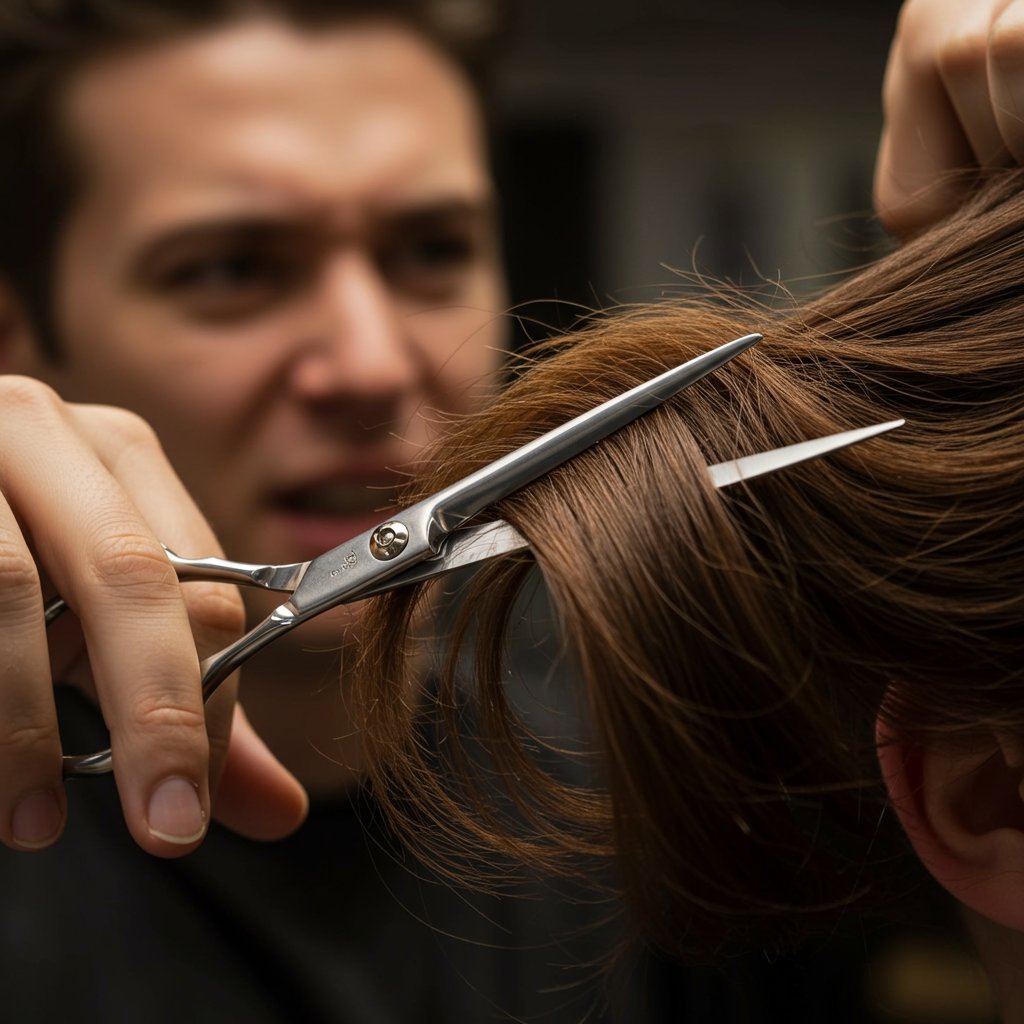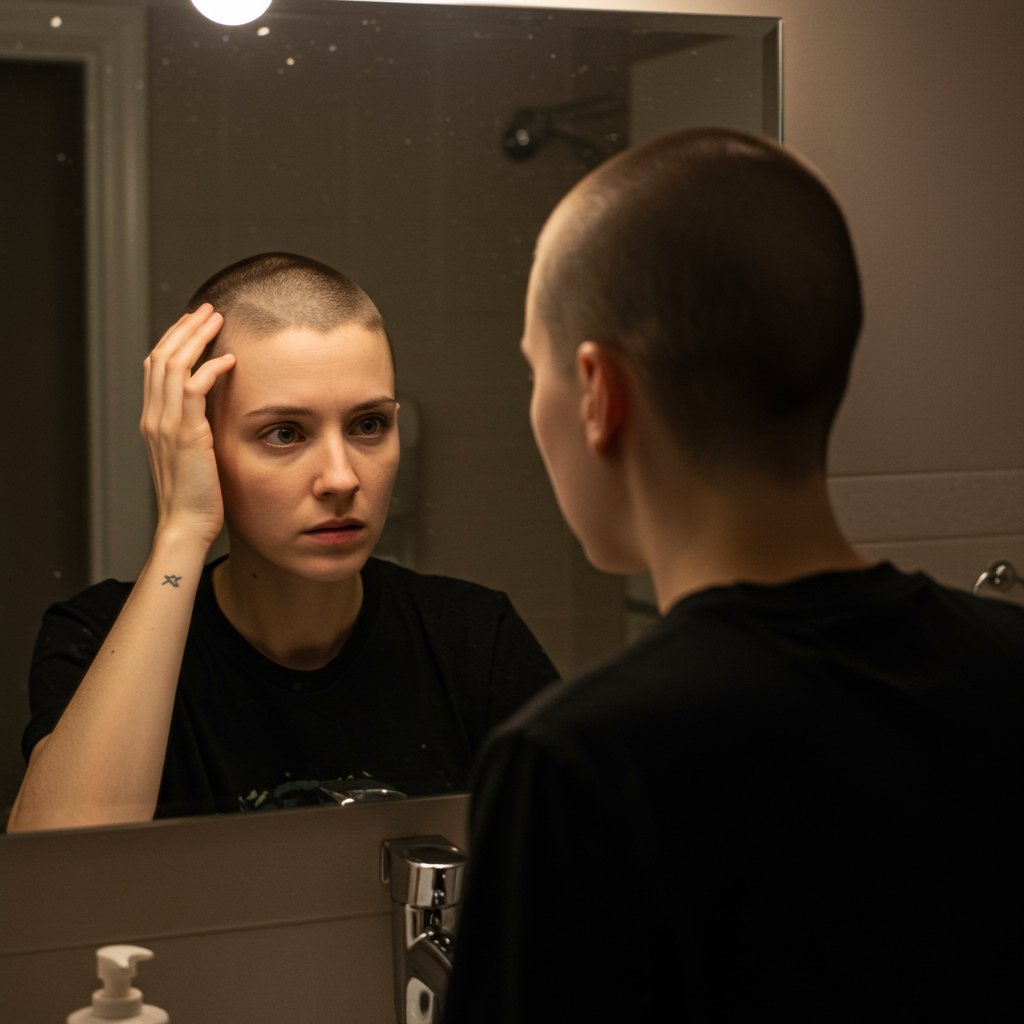The Psychology of a Drastic Haircut Change | What Your New Style Says About You
More Than Just Hair: Unpacking the Psychology of a Drastic Haircut Change
It’s a feeling many of us know intimately: the sudden, overwhelming urge to change our hair. It’s not just about wanting a trim or covering up some roots. This is a desire for something monumental—a pixie cut after years of long locks, a vibrant fantasy color replacing natural tones, or a buzzcut that sheds it all. This impulse is rarely just about aesthetics. It’s a powerful external manifestation of an internal shift. Understanding the psychology of a drastic haircut change reveals a fascinating intersection of identity, emotion, and the human need for control. Our hair is one of the most immediate and visible ways we present ourselves to the world, making it a potent tool for communication and self-redefinition.

For centuries, hair has held profound significance across cultures, symbolizing strength, femininity, rebellion, conformity, and social status. It’s a canvas for our identity. When we choose to dramatically alter this canvas, we are often sending a message, not just to others, but to ourselves. This act can be a declaration of independence, a way to process grief, a celebration of a new beginning, or a desperate grasp for control when everything else feels chaotic. Before you dismiss that itch for a “big chop” as a fleeting whim, it's worth exploring the deeper psychological currents that might be pulling you toward the salon chair. This journey into the mind behind the makeover uncovers why a simple haircut can feel like a life-altering event.
The Crown You Never Take Off: Hair as a Core Part of Identity
Hair is inextricably linked to our sense of self. Think of it as your personal, biological brand statement. From a young age, we receive messages about our hair—what’s considered “beautiful,” “professional,” or “appropriate.” These messages shape our relationship with our hair and, by extension, ourselves. For many, their hairstyle becomes a shorthand for their personality: the carefree artist with flowing waves, the sharp executive with a sleek bob, the punk rocker with a defiant mohawk. This connection is so profound that our hair can feel like a direct extension of our identity.

Because of this deep link, a drastic change to our hair is a change to our perceived identity. It’s a way of physically altering the story we tell the world. Cutting off long hair might symbolize shedding a more traditional or youthful persona to embrace a more mature, sophisticated, or daring one. Conversely, growing hair out could represent a desire for a softer, more naturalistic identity. The choice of color, texture, and length are all brushstrokes in the portrait of who we are at any given moment. This is why a bad haircut can feel so devastating; it’s not just a bad look, it’s a misrepresentation of our inner self, a visual dissonance that can shake our confidence to its core.
Self-Expression and Social Signaling
Beyond personal identity, hair is a powerful tool for social signaling. It can signal affiliation with a subculture, a political stance, or a stage of life. A woman shaving her head might be challenging traditional beauty standards, while a man growing his hair long could be pushing back against corporate norms. When we make a conscious choice to step outside of our usual hairstyle, we are often re-evaluating our place in the world and how we want to be perceived. It’s a non-verbal announcement that says, “I am not the same person I was yesterday.” This act of transformation allows us to experiment with different facets of our personality and see which one feels most authentic.
The "Big Chop" as a Rite of Passage: Marking Major Life Transitions
Human beings have always used rituals to mark significant life transitions: graduations, weddings, birthdays. A drastic haircut has become a modern, personal rite of passage. These pivotal moments—starting a new career, moving to a new city, finishing a degree, or entering a new decade—often come with a desire to physically commemorate the change. The “big chop” serves as a distinct line in the sand, a physical demarcation between the “before” and the “after.”

Cutting off the hair that was with you during a challenging period—a difficult job, a stressful academic program, a period of personal struggle—can feel incredibly cathartic. It’s a tangible way of leaving the past behind. The physical sensation of snipping away inches or even feet of hair is a release. It’s a conscious decision to unburden oneself from the literal and metaphorical weight of the past. This act empowers the individual, giving them an active role in their own transformation story. It’s not something that happened to them; it’s something they did.
This is particularly true for changes that signify growth and new beginnings. For example, after finishing chemotherapy, many survivors describe the experience of shaving their head or styling their new hair growth as a profound moment of reclaiming their body and celebrating health. Similarly, a new mother might opt for a short, low-maintenance cut to signify her new role and priorities. These are not acts of vanity, but deeply meaningful rituals that help align the outer self with a new inner reality.
Reclaiming Control: The Power of a Haircut in Times of Chaos
When life feels unpredictable and out of control, we often seek to control the things we can. We might organize our closets, start a new fitness regimen, or… get a drastic haircut. In the face of job loss, personal illness, or global uncertainty, your own body is one of the few domains where you retain full autonomy. The decision to change your hair is a decisive, immediate, and visible way to exert control.

This psychological principle, known as “locus of control,” refers to the degree to which people believe they have control over the outcome of events in their lives. During tumultuous times, our external locus of control is challenged. We feel like passengers in our own lives. A haircut is a powerful shift back to an internal locus of control. You choose the style. You sit in the chair. You make the decision. This simple act can restore a sense of agency that has a ripple effect on other areas of life, providing a small but significant boost in confidence and a feeling of being back in the driver's seat.
The Immediacy of Transformation
Unlike many other forms of self-improvement that require time and patience (like learning a new skill or getting in shape), a haircut offers instant gratification. You walk into a salon one person and walk out another. This immediate, tangible result can be incredibly satisfying when other life projects feel slow and arduous. The reflection in the mirror provides instant proof that change is possible and that you are the architect of it. This visual confirmation can be a powerful motivator, inspiring you to tackle other, larger challenges in your life with renewed vigor.
The Post-Breakup Transformation: Shedding the Past
The “post-breakup haircut” is so common it has become a cultural trope, and for good reason. A romantic relationship, especially a long-term one, often leads to a merging of identities. After a separation, there is a crucial need to rediscover and redefine oneself as an individual. Changing one’s hair is one of the fastest ways to sever a visual tie to the past and the person you were in that relationship.

Often, a partner has an opinion or preference for a certain hairstyle. Cutting or coloring it in a way that is purely for yourself is a powerful act of reclaiming your personal aesthetic and independence. It’s a declaration that your choices about your body are your own. Furthermore, if your hair was long and frequently touched by your former partner, cutting it off can feel like removing their lingering presence, a physical cleansing that facilitates emotional healing. It’s a way of shedding old energy and making space for the new.
This transformation is not about erasing memories but about creating a new visual identity that is not associated with the pain of the past. Seeing a new person in the mirror—someone who looks stronger, different, and forward-looking—can help to change the internal narrative from one of loss to one of renewal and opportunity. It’s a powerful step in the journey of moving on.
Dopamine Dressing for Your Hair: Seeking a Mood Boost
Sometimes, the reason for a drastic haircut isn't rooted in trauma or a major life event. It can be a simple, powerful pursuit of joy. The concept of “dopamine dressing”—wearing bright, fun clothes to boost your mood—can be applied directly to hair. A bold new color, an edgy cut, or a playful style can provide an instant hit of novelty and excitement, which can trigger a release of dopamine, the brain's “feel-good” neurotransmitter.

When you’re stuck in a rut or feeling bored with your routine, changing your hair is a low-stakes way to shake things up and inject some fun into your life. The compliments and attention that a new style often attracts can also provide a significant confidence boost. It makes you feel seen and refreshed. This change can break the monotony and encourage you to see yourself—and your life—through a new, more vibrant lens. It’s a form of self-care, an investment in your own happiness and a reminder that you have the power to create moments of joy for yourself.
The Social and Cultural Significance of Hair Changes
Our personal decisions about hair are never made in a vacuum. They are influenced by social trends, cultural norms, and historical context. A drastic haircut can be a way of aligning with or rebelling against these forces. The bob haircut of the 1920s, for example, was a radical symbol of women’s liberation, a rejection of Victorian standards of femininity. Today, embracing natural hair textures, particularly for Black women, is a powerful political and cultural statement against Eurocentric beauty ideals.

When you choose a drastic new style, you are participating in this larger cultural conversation. You might be inspired by a celebrity who normalized a certain look, or you might be consciously choosing a style that represents your heritage and cultural pride. This adds another layer of meaning to the transformation. It connects your personal journey to a collective story, making the act feel even more significant. Understanding this context can enrich the experience, turning a simple haircut into an act of cultural expression.
Navigating the Aftermath: Managing Haircut Regret and Embracing the New You
While the impulse for a drastic change is powerful, the aftermath can sometimes be complicated. What happens when the reflection in the mirror doesn’t match the empowered vision you had in your head? “Haircut regret” is a real phenomenon. The initial shock can be jarring, and it’s easy to panic and feel a sense of loss for your old hair. This is a normal part of the process for some people, especially when the change is significant.

If you experience regret, give it time. It can take a few days or even weeks to get used to a new look. Your brain needs time to update its internal self-image. Learn how to style your new cut; often, dissatisfaction comes from not knowing how to manage a new length or texture. A consultation with a stylist can provide you with the tools and techniques to love your new hair. Remember that hair grows back. This permanence is an illusion, which is part of what makes it such a safe space for experimentation. Use this as a learning experience about what you like and what makes you feel like your most authentic self. Ultimately, embracing the new you—even if it’s temporary—is part of the journey of self-discovery that the haircut initiated in the first place.
Ready for a Change? How to Prepare for Your Transformation
Feeling inspired to make a change? A successful transformation starts with thoughtful preparation. Impulsive decisions can be liberating, but a little planning can help ensure you love the result.

- ### Find Your Inspiration: Gather photos of haircuts you love. Look for examples on people with similar face shapes and hair textures to yours. Pinterest and Instagram are great resources, but also look to film, art, and history for unique ideas.
- ### Choose the Right Stylist: This is the most crucial step. Research stylists who specialize in the type of cut or color you want. Look at their portfolios. A great stylist is a collaborator who will listen to your vision and use their expertise to adapt it for you.
- ### Have an In-Depth Consultation: A thorough consultation is non-negotiable for a drastic change. Talk to your stylist about your lifestyle, how much time you’re willing to spend on styling, your hair’s history, and your ultimate goals. Be honest about your fears and expectations.
- ### Trust the Process: Once you’ve chosen a skilled professional and communicated your vision, try to relax and trust their expertise. They understand the technical aspects of hair that can make or break a style.
- ### Plan for Aftercare: Ask your stylist for product recommendations and styling tips for your new look. The right products can make all the difference in maintaining the health and style of your transformed hair.
Frequently Asked Questions About Hair Psychology
1. Why do I always want to cut my hair after a breakup? This is a classic response rooted in the desire to shed the past and reclaim your identity. A haircut is a physical manifestation of moving on, cutting ties with the person you were in the relationship, and creating a new visual identity that is solely your own.

2. Is it a bad idea to make a drastic hair change when I'm feeling emotional? Not necessarily, but it’s wise to pause and reflect. Ask yourself: am I running away from something, or running towards something? If the change is about embracing a new, positive chapter, it can be incredibly empowering. If it's a purely reactive decision, it might be worth waiting a week to see if the feeling persists.
3. What does it mean if I constantly change my hair color and style? Frequent changes can indicate a creative, experimental personality that enjoys exploring different facets of their identity. It can also be a sign of a transitional period in life where you are figuring out who you are. There's no right or wrong; it's a form of self-expression.
4. How can I avoid “haircut regret”? The best way is through preparation. Do your research, have a detailed consultation with a trusted stylist, and be realistic about the outcome and maintenance. Bring photos and be clear about what you do and don't want.
5. Can a new haircut really improve my confidence? Absolutely. A new haircut that you love can change the way you see yourself and how you carry yourself. It's the “look good, feel good” effect. When your outer appearance aligns with your inner sense of self, it can provide a significant and immediate boost to your self-esteem.
6. Is there a psychological reason why so many people made drastic hair changes during the pandemic? Yes, the pandemic was a period of immense uncertainty and lack of control. Confined to their homes, people sought ways to exert agency and mark the passage of time. Changing their hair was a tangible, controllable act in a world that felt chaotic, often referred to as a form of “control-seeking behavior.”
Your Hair, Your Story: The Final Cut
The psychology of a drastic haircut change is a rich tapestry woven with threads of identity, control, emotion, and renewal. It is a testament to the fact that what grows from our heads is deeply connected to what grows in our hearts and minds. Whether you are marking a new chapter, reclaiming your power, or simply injecting a dose of joy into your life, a hair transformation is a deeply personal and often profound act.
It’s a reminder that we are not static beings. We have the ability to reinvent ourselves, to shed old skins—or old strands—and to step into the world as a newer, more authentic version of ourselves. The next time you feel that undeniable pull towards a major change, know that you are not just thinking about a haircut. You are authoring the next chapter of your story, one snip at a time. And that is a beautiful and powerful thing.


